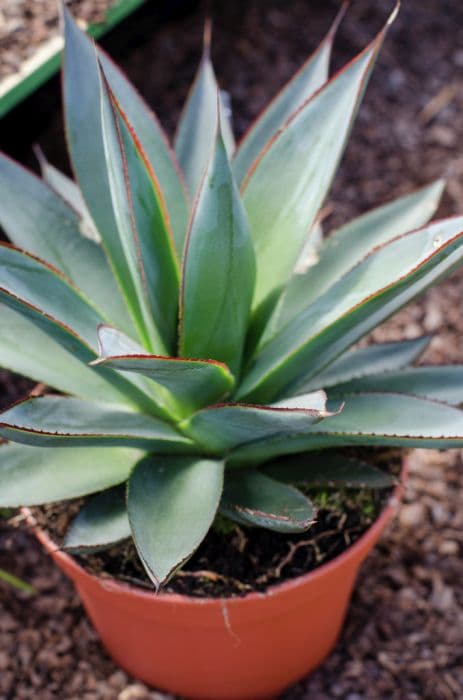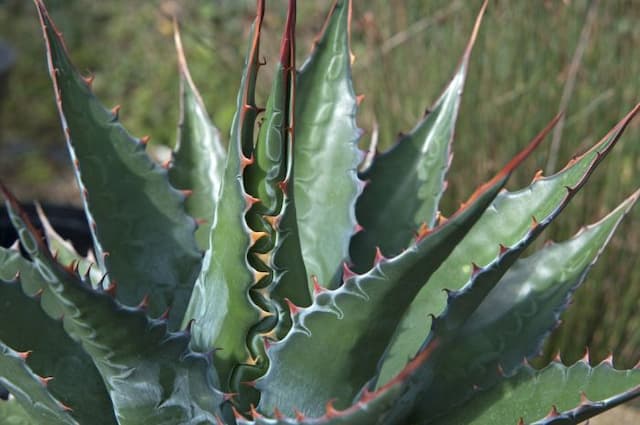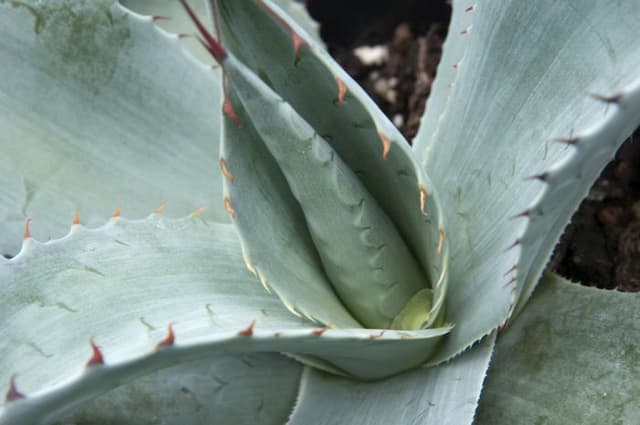Plantain Lily Hosta ventricosa

ABOUT
Hosta ventricosa, commonly known as Blue Plantain Lily, is a striking perennial known for its lush foliage and attractive flowers. The appearance of this plant is marked by its broad and heart-shaped leaves that have a slightly puckered texture and a deep green color. The rich shade of green often has a glossy or shimmering quality, contributing to the plant's visual appeal in garden settings. The leaves of the Blue Plantain Lily typically form a mounding habit, creating a substantial presence in the landscape without reference to its specific dimensions. During blooming season, the Blue Plantain Lily produces bell-shaped flowers which are a lovely shade of lavender to violet, adding a pop of color against the dense green foliage. These flowers grow on tall stalks that rise gracefully above the leaves, and they are arranged in clusters known as racemes, which have a striking and decorative effect. Moreover, the Blue Plantain Lily not only offers beauty through its leaves and flowers but also brings texture and a sense of fullness to garden compositions. This plant is appreciated for its hardiness and ease of care, making it a popular choice among gardeners who wish to add lush, decorative foliage and charming flowers to their outdoor spaces without an emphasis on the exact measurements of its growth.
About this plant
 Names
NamesFamily
Asparagaceae
Synonyms
Blue Plantain Lily, Blue Cupped Hosta, Ventricosa Hosta
Common names
Hosta caerulea, Funkia caerulea, Funkia subcordata, Hosta clausa var. normalis, Hostia ventricosa.
 Toxicity
ToxicityTo humans
Hostas, which include Hosta ventricosa, are generally considered safe around humans. They are not known for being toxic if ingested. However, if a large quantity is consumed, it might cause mild stomach upset due to the plant's saponin content. It is advisable to avoid eating hostas, but accidental ingestion typically does not lead to serious health consequences for humans.
To pets
Hostas, including Hosta ventricosa, are toxic to pets, particularly dogs and cats. If ingested, they can cause vomiting, diarrhea, and depression due to the saponin content in the leaves and stems. While hostas are not considered highly toxic, it is still important to prevent pets from eating these plants to avoid gastrointestinal distress or other negative reactions. If you suspect your pet has consumed hostas, it is best to consult with a veterinarian.
 Characteristics
CharacteristicsLife cycle
Perennials
Foliage type
Deciduous
Color of leaves
Green
Flower color
Purple
Height
2 feet (0.61 meters)
Spread
4 feet (1.22 meters)
Plant type
Herb
Hardiness zones
3
Native area
China
Benefits
 General Benefits
General Benefits- Aesthetic Appeal: Hosta ventricosa, commonly known as Blue Plantain Lily, features attractive foliage that enhances garden design with its lush, green leaves.
- Shade Tolerance: Blue Plantain Lily thrives in shaded areas where other plants might struggle, making it ideal for woodland gardens or under tree canopies.
- Low Maintenance: This plant requires minimal care, making it suitable for gardeners with limited time or those new to gardening.
- Versatility: Blue Plantain Lily can be used in various garden settings such as borders, ground covers, and container gardens.
- Drought Resistance: Once established, it has good tolerance to dry conditions, reducing the need for frequent watering.
- Slugs and Snails Resistance: Hosta ventricosa has thicker leaves which are less appealing to slugs and snails compared to other hostas.
- Foliage Variation: It offers a range of colors and textures in foliage, which can add visual interest throughout the growing season.
- Long-Lived Perennial: Being a hardy perennial, it can live for many years with the proper care, providing long-term value in the garden.
- Erosion Control: The dense foliage and root system can help to prevent soil erosion, especially in shaded, sloped areas.
- Wildlife-Friendly: The flowers can attract pollinators like bees, and the dense foliage can provide shelter for small wildlife.
 Medical Properties
Medical PropertiesThis plant is not used for medical purposes.
 Air-purifying Qualities
Air-purifying QualitiesThis plant is not specifically known for air purifying qualities.
 Other Uses
Other Uses- Hosta ventricosa, commonly known as hosta, can be utilized in flower arrangements and bouquets, providing a lush, leafy green backdrop to complement bright floral colors.
- Leaves of the hosta can be used as a natural dye for fabrics, producing various shades of green depending on the processing method used.
- The larger leaves of hosta serve as impromptu plates or wrappers for outdoor dining experiences, giving an eco-friendly touch to picnics and garden parties.
- Due to its dense foliage, hosta can be planted as a ground cover to mitigate soil erosion in areas susceptible to water runoff.
- Hosta leaves can be used as a natural insulation material in small garden structures, providing a modest thermal barrier due to their thickness.
- In landscape design, hosta is often employed in mass plantings to create a textured understory in wooded or shaded garden areas.
- With their sculptural leaves, hosta varieties can be used in art projects, like leaf-casting, to create ornamental garden accents.
- Due to its resilience and tolerance to shade, hosta can be planted to green urban spaces with limited light, enhancing the biodiversity of the area.
- Hosta’s dense foliage can provide a protective habitat for small beneficial insects and animals, supporting local ecosystems.
- Garden enthusiasts may use the varied patterns and colors of hosta leaves to create a visually captivating tapestry effect in shade gardens.
Interesting Facts
 Feng Shui
Feng ShuiHosta is not used in Feng Shui practice.
 Zodiac Sign Compitability
Zodiac Sign CompitabilityHosta is not used in astrology practice.
 Plant Symbolism
Plant Symbolism- Resilience - Hosta ventricosa is known for its hardiness and ability to thrive in various conditions, symbolizing the ability to overcome adversity.
- Devotion - With its lush foliage that returns year after year, this plant is often associated with steadfastness and loyalty.
- Hope - The Hosta's dependable growth after winter suggests hope and renewal, echoing the promise of new beginnings.
- Adaptability - Known for its versatility in shade gardening, the Hosta represents the quality of adaptability in life's various circumstances.
 Water
WaterHostas need consistent moisture and should be watered deeply about once a week, providing an equivalent of 1 inch of rainfall; this would be roughly 0.623 gallons per square foot. During hot or dry periods, the watering frequency should increase to maintain moist soil, which helps to keep their broad leaves healthy. Avoid overhead watering to minimize leaf fungal diseases; instead, water at the base of the plant. Reduce watering during the fall to prepare the plant for winter dormancy. It's essential not to let the soil dry out completely, as this can stress the plant and lead to leaf scorch.
 Light
LightThe Blue Plantain Lily prefers partial to full shade. It thrives best in a location where it can receive filtered sunlight or morning sun with afternoon shade. Too much direct sunlight can cause the leaves to burn, so avoid placing it in an area where the hot midday or afternoon sun will hit it directly.
 Temperature
TemperatureThe Blue Plantain Lily tolerates a wide range of temperatures but grows best when daytime temperatures are between 60°F and 75°F. The plant can survive minimum temperatures down to about 30°F but should be protected from frost to avoid damage to the foliage. During the growing season, the Blue Plantain Lily prefers a consistently moderate climate without extreme heat or cold.
 Pruning
PruningPruning of the Blue Plantain Lily is mainly done to remove dead or damaged leaves and to maintain a tidy appearance. Pruning should be carried out in the spring or after flowering, typically by cutting back the foliage to the ground in the late fall to prepare the plant for winter. Pruning periodically also helps to encourage healthy new growth.
 Cleaning
CleaningAs needed
 Soil
SoilHostas prefer a well-draining soil mix rich in organic matter with a pH range of 6.0 to 7.5. You can mix garden soil with compost, peat moss, and perlite at a ratio of 2:1:1:1 to create an ideal growing medium for Hosta plants, commonly known as Hostas.
 Repotting
RepottingHostas, or Plantain Lilies, typically need repotting every 3 to 5 years, or when the clump becomes too crowded. Divide the plants in early spring or fall for the best results.
 Humidity & Misting
Humidity & MistingHostas, often referred to as Plantain Lilies, thrive in moderate to high humidity levels, typically around 50-75%, to mimic their native understory environments. They can tolerate lower humidity but prefer consistently moist air.
 Suitable locations
Suitable locationsIndoor
Place Hostas in bright, indirect light and keep soil moist.
Outdoor
Plant Hostas in shade or part-shade and ensure soil drainage.
Hardiness zone
3-9 USDA
 Life cycle
Life cycleThe life of Hosta ventricosa, commonly known as Hosta or Plantain Lily, begins with seed germination, typically occurring in moist, well-drained soil under partial to full shade. Upon sprouting, the seedling develops a small rosette of leaves close to the ground, which gradually matures during the spring. As the Hosta grows, it forms a larger clump of heart-shaped, often variegated leaves, from which it draws energy for further development. In early to mid-summer, Hosta ventricosa sends up tall flower stalks bearing funnel-shaped, purple flowers that are capable of self-fertilization, leading to seed production. Following pollination and seed set, the plant enters a period of dieback in the fall and goes dormant over winter, with the underground rhizomes surviving freezing temperatures. Each spring, the Hosta re-emerges from its rhizome, continuing its perennial growth cycle.
 Propogation
PropogationPropogation time
Late summer
Propogation: Hosta ventricosa, commonly known as the Blue Plantain Lily, is most frequently propagated through division. The ideal time to divide this plant is in the early spring or late summer, just as the plant emerges from dormancy or as it begins to wind down its growing season, respectively. To propagate by division, carefully dig up the entire clump of the hosta, taking care to preserve as much of the root system as possible. Gently separate the crowns of the hosta, which are the points where the stems meet the roots, ensuring that each division has at least two or three shoots and a portion of the root system attached. These newly created divisions can then be replanted at the same depth they were growing before, spaced approximately 30 inches (76 centimeters) apart to allow room for growth. Adequate watering after replanting is essential to ensure the divisions establish well in their new locations.









